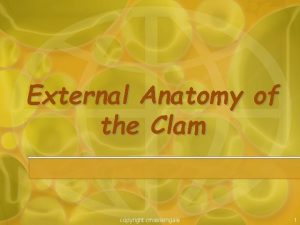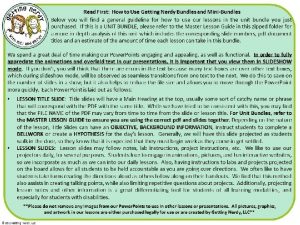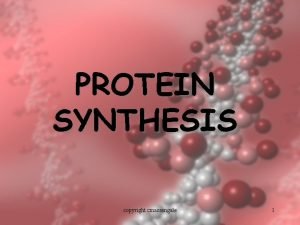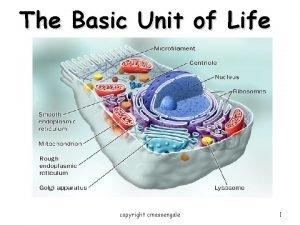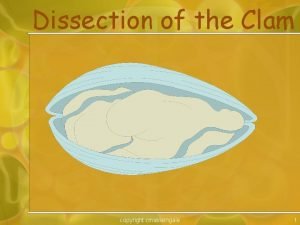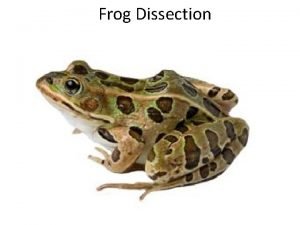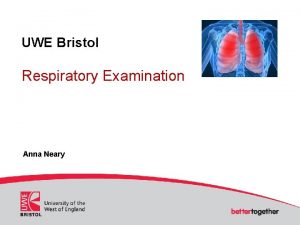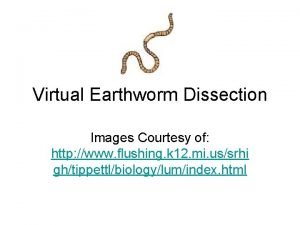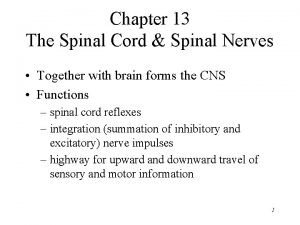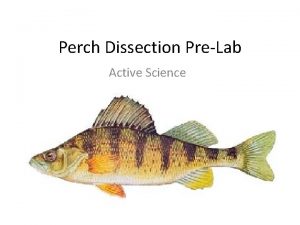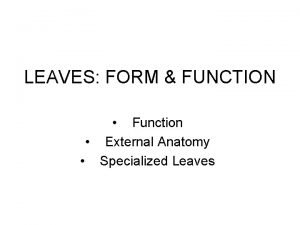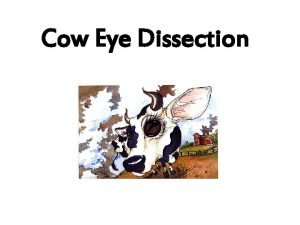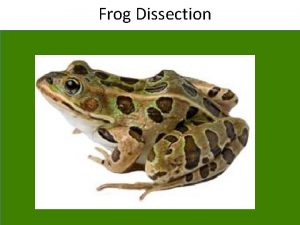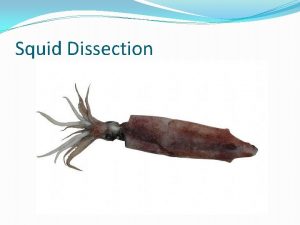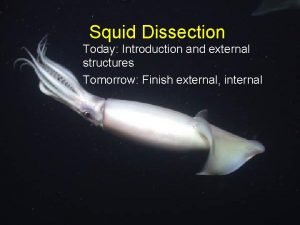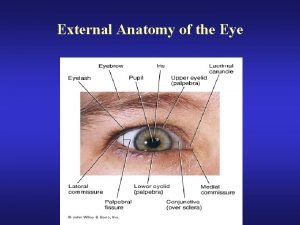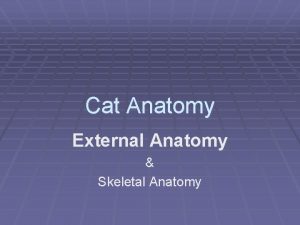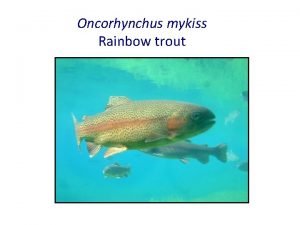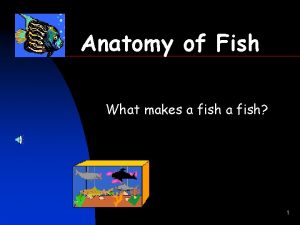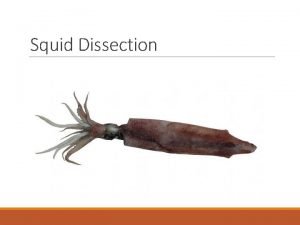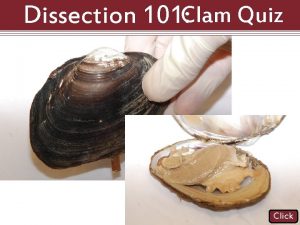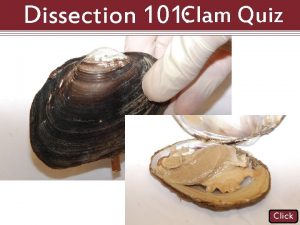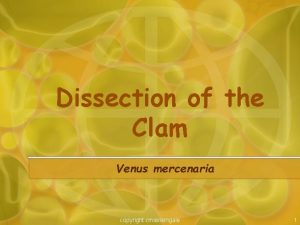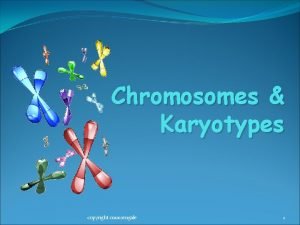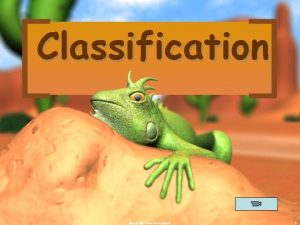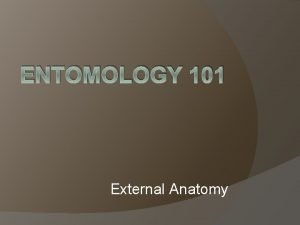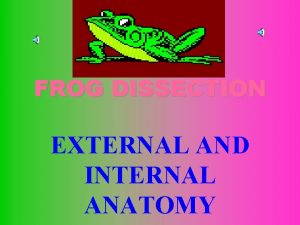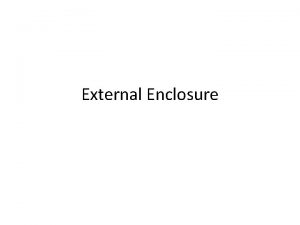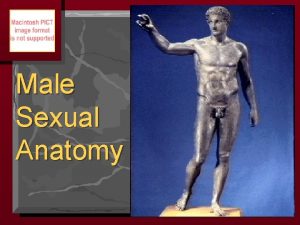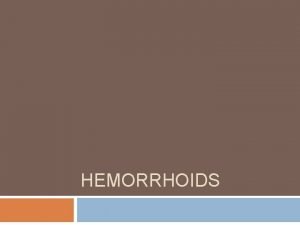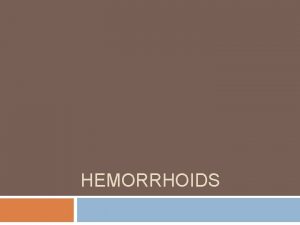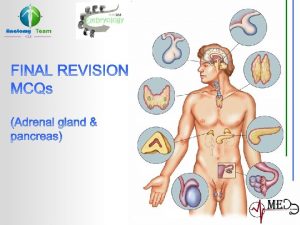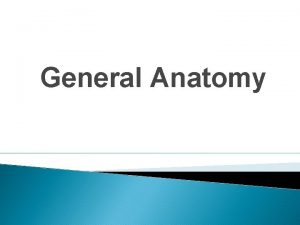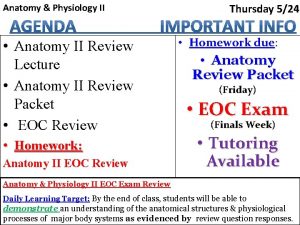External Anatomy of the Clam copyright cmassengale 1

























- Slides: 25

External Anatomy of the Clam copyright cmassengale 1

Bivalve Shell • Umbo is the raised, oldest part of the shell and is used to find surfaces Dorsal UMBO Posterior Anterior Ventral copyright cmassengale 2

Bivalve Shell • Shell show regular spacing of external growth rings on shells and their progressive crowding as the animals grow older Growth Rings copyright cmassengale 3

Bivalve Shell • Bivalves have an incurrent and excurrent siphon to bring in water containing food & O 2 and for excess water & wastes to leave Siphons copyright cmassengale 4

copyright cmassengale 5

Bivalve Shell • The hinge ligament holds the two halves of the shell together copyright cmassengale 6

Internal Anatomy copyright cmassengale 7

Scissor tips or a screwdriver & can be used to open the shell copyright cmassengale 8

Adductor Muscles Strong adductor muscles help open & close the valves and must be cut to examine the interior of the clam copyright cmassengale 9

copyright cmassengale 10

Inside Shell Lining • The inside of the shell is pearly and smooth to protect the body • Oysters coat irritants with a substance called “mother of pearl” copyright cmassengale 11

copyright cmassengale 12

Teeth located on the dorsal edge of the shell lock to keep shells from sliding copyright cmassengale 13

The mantle makes a Ca. CO 3 (limestone) shell copyright cmassengale 14

Mantle cavity Gills hang outside visceral mass (body) in the mantle cavity & remove O 2 as H 2 O flows over them copyright cmassengale 15

copyright cmassengale 16

copyright cmassengale 17

copyright cmassengale 18

Water Flow • Incurrent siphons aid in bringing in water with food and oxygen • Cilia direct water into the gills, while labial palps direct water into the mouth move food toward the mouth Cilia on the gills pulls in water copyright cmassengale 19

VISCERAL MASS - contains respiratory, digestive, & reproductive systems copyright cmassengale 20

HEART & PERICARDIAL CAVITY copyright cmassengale 21

Nervous System • Consists of 3 pairs of ganglia (brain) • Has 2 pairs of nerve cords extending from this copyright cmassengale 22

Released into Mantle Cavity to be removed by excurrent Siphon: • Nitrogen waste from kidney • Digestive waste from anus • Sperm or egg (if external fertilization) • Larva (if internal fertilization) copyright cmassengale 23

copyright cmassengale 24

copyright cmassengale 25
 Inside of a clam diagram
Inside of a clam diagram Pharynx function earthworm
Pharynx function earthworm Taxonomy groups
Taxonomy groups Cmassengale
Cmassengale Cmassengale
Cmassengale Clam taxonomy
Clam taxonomy External-external trips
External-external trips Reproductive organ of frog
Reproductive organ of frog Frog artery
Frog artery Axillar line
Axillar line Virtual earthworm dissection
Virtual earthworm dissection Spinal nerves names
Spinal nerves names Perch dissection
Perch dissection Specialized leaves examples
Specialized leaves examples Cow eye retina
Cow eye retina Frog
Frog Squid domain kingdom
Squid domain kingdom Squid external anatomy
Squid external anatomy Parts of eye external
Parts of eye external Cat external anatomy
Cat external anatomy Internal trout anatomy
Internal trout anatomy Frog dissection external anatomy
Frog dissection external anatomy Largemouth bass anatomy
Largemouth bass anatomy Frog body parts and functions
Frog body parts and functions Cavity of sphenoid bone
Cavity of sphenoid bone Gonad of a squid
Gonad of a squid
